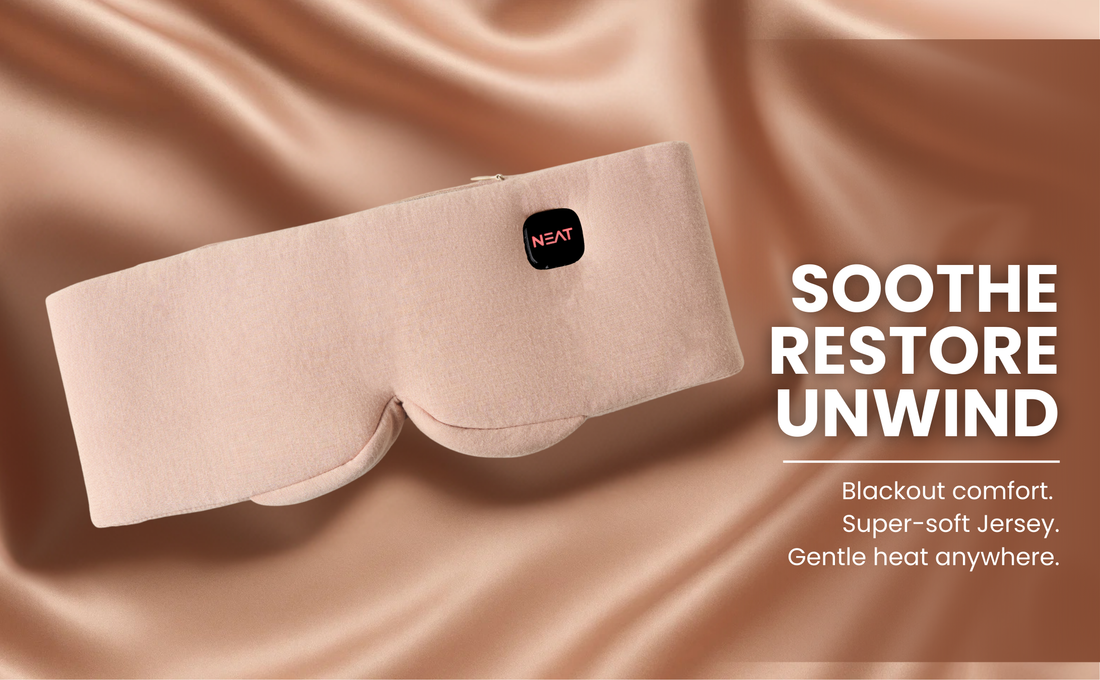I’ve always been fascinated by how small rituals change how we feel. When it comes to eye care, there’s a quiet debate: should you go for soothing heat or refreshing cold? I’ve tested both, often switching depending on whether my eyes felt dry from a day on the laptop or puffy after a long flight. And what I learned is this: the “right” answer depends on what your body needs in the moment.
Why temperature matters for your eyes
Our eyes are delicate organs, and they react strongly to temperature. Heat helps increase circulation, relax tense muscles, and stimulate oil glands in the eyelids that keep eyes moist. That’s why ophthalmologists often recommend warm compresses for dry eyes or screen fatigue. On the other hand, cold works by constricting blood vessels, which reduces puffiness and inflammation—perfect for swollen eyes after too little sleep or too much salty food.
My trial and error with heat vs cold
When I first tried a heated eye mask, I felt my eyes instantly relax, almost like my brain was being told it was safe to switch off. After a week of using it before bed, I noticed I was falling asleep faster and waking up with less dryness. But when I experimented with cold masks after red-eye flights, the cooling effect took down puffiness within minutes. For me, the sweet spot has been alternating: heat for routine relaxation, cold for recovery.
Comparing heat, cold, and regular masks
| Eye Mask Option | Best For | Scientific Backing | Comfort Level | My Experience |
|---|---|---|---|---|
| Regular Sleep Mask | Blocking light only | Limited | Light & portable | Helped with light but not dryness or puffiness. |
|
Cold Eye Mask/ Compress |
Puffiness, swelling, headaches | Strong for inflammation | Can feel too intense | Great after flights, but not something I use daily. |
| Heated Eye Mask | Dry eyes, screen fatigue, relaxation | Strong for meibomian gland & circulation | Cozy & soothing | My nightly ritual for winding down. |
Honest pros and cons
Cold masks are amazing for visible results in a short time, but they can feel uncomfortable if used too long. Regular masks block light but don’t address dryness or swelling. Heated masks are cozy and versatile, but they do require a power source or charge. None are perfect—but when matched to the right situation, each one has a role.
How I use them now
These days, my heated mask is part of my bedtime ritual, especially after long days at the laptop. On the rare mornings when my eyes look puffy, I reach for a cooling mask instead. And while regular masks never quite worked for me, I’ve found blackout-style heated ones give me the best of both worlds: darkness plus warmth.
Final thoughts
The choice isn’t really about heat versus cold—it’s about matching the right tool to the right need. Heat relaxes and restores moisture. Cold refreshes and reduces swelling. Both have their place, and knowing when to use which can turn a simple mask into a powerful act of self-care.
Common questions
Are heated eye masks safe to use daily?
Yes, most are designed to stay within safe temperature ranges and shut off automatically.
How long should you use a cold eye mask?
Usually 5–10 minutes is enough to reduce puffiness without discomfort.
Can I use a heated mask if I don’t have dry eyes?
Absolutely. Many people use heat simply to relax and prepare for sleep.
Which is better for jet lag, heat or cold?
Cold helps reduce puffiness after a flight, while heat helps reset your sleep routine.

